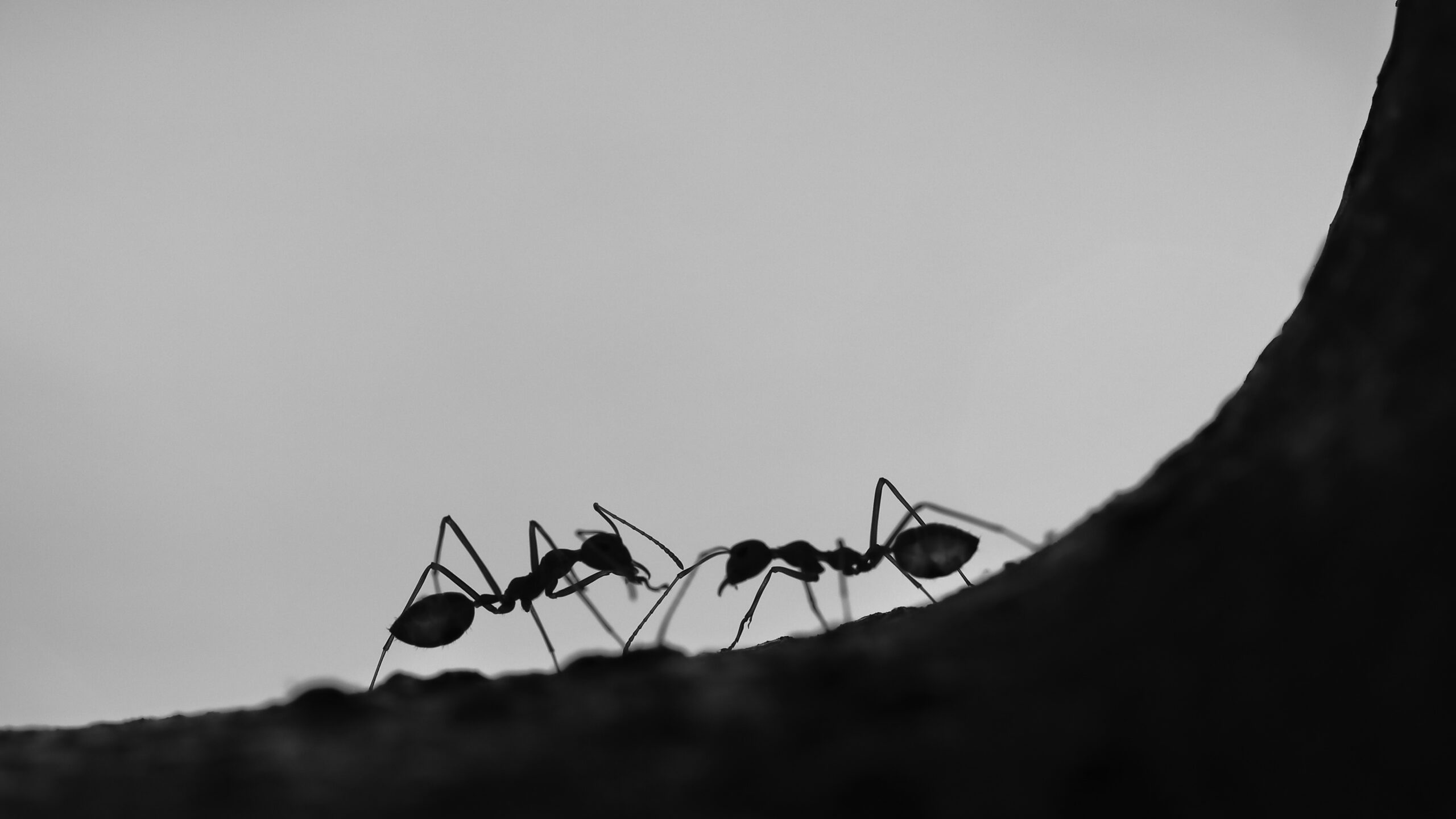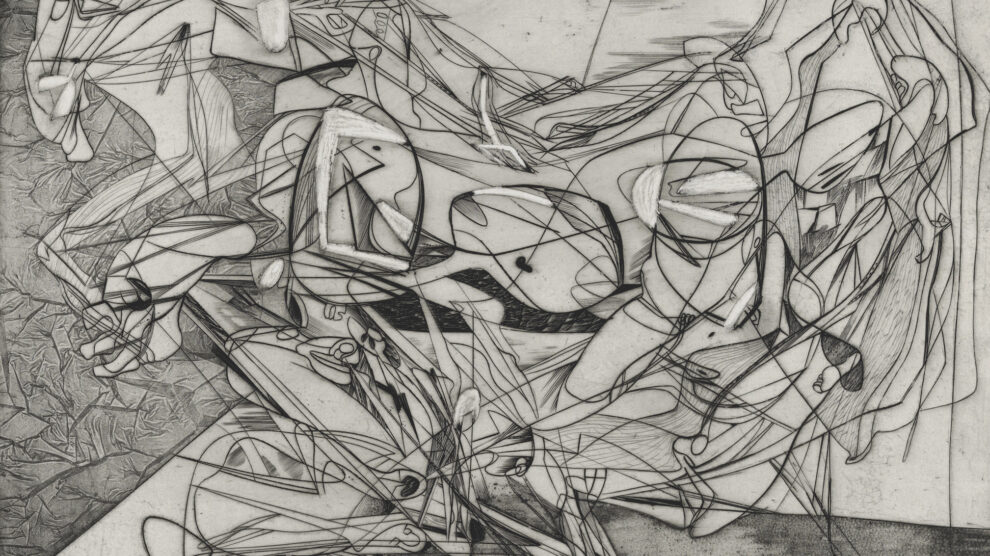February 15, 2022
Ideology and Politics of E. O. Wilson’s Serious Science
By Calvin Wu
E. O. Wilson’s reactionary scientific and political legacy is a subject of fierce offense and defense, from Scientific American, to Substack, to the New York Review of Books. The frontline traces the contour of the left-right divide in contemporary discourse on race, gender, and class. Thus, it is rather surprising to read a defense of Wilson in the New Left Review.
Richard Seymour in his recent essay claims that Wilson was “often misunderstood by the left” and that “the left” should engage a “serious scientist” with nuance.1 But who among the left misunderstood Wilson? Is this a reference to Richard Lewontin and the Sociobiology Study Group?2 And what was the misunderstanding? Seymour neither directs his accusation toward particular critics of Wilson nor provides any justification. In the end, one wonders whether Seymour is projecting his own internal conflict between his admiration for Wilson and the evidence of Wilson’s politics, because by Seymour’s own admission, Wilson held very troubling views on science and society.
Yet, despite acknowledging Wilson’s biological determinist, racialist, Malthusian, and eugenic tinge,3 Seymour assures us that these are but “a fraction of his output.” The Vienna positivists would be proud to know that Seymour has cleanly separated the scientist from the science, that one can judge a scientist’s legacy by their discrete and independent outputs, with no regard for how scientific ideas are formed under certain ideological frameworks, and how the product of science—the embodied labor of a scientist—both reinforces ideology and shapes social realities.4
The immediate issue with Seymour’s defense is the statement that Wilson is politically “obtuse.” While Seymour acknowledges the New York Review of Books piece on Wilson’s connection to “race scientist” J. Philippe Rushton,5 he may have missed the preceding Science for the People article that first presented archival evidence for this relationship.6 The SftP piece brought readers into the hidden abode of Wilson’s politics. Far from politically ignorant, Wilson knew exactly the implication of Sociobiology, knew how the public would react if he were to overtly support race “science,” and knew to encourage others to fight on his behalf as he himself hid behind scientific respectability and supposed neutrality.
Whether Wilson’s covert support of racists can be explained by his ambition in upholding his “theory of everything”—a misguided but noble attempt, as portrayed by Seymour—is beside the point; neither is it pertinent to psychoanalyze Wilson’s attitude toward marginalized social groups. It is interesting, nevertheless, to catch a glimpse of Wilson’s prescription for scientific achievement by the essay’s title, “away from the guns”—not through contradictions and debates, intellectual battles, and Kuhnian shifts, but through establishing a scientific fiefdom where one could preserve and cultivate one’s ambition and prestige. If Seymour’s defense is only meant to ask us not to “cancel” Wilson, there would be disagreement. However, the left must be able to identify and name reactionary ideology, especially when it has lingered in an ambiguous limbo for more than forty years, and now challenged by incontrovertible evidence. To do this, the presupposition that one can separate science from politics must be rejected once and for all.
Seymour’s uncritical acceptance of Wilson’s self-proclaimed neutrality is thus amusing, as if Wilson deserves the benefit of the doubt because he was “middle-of-the-road.” Seymour borrows a canard reminiscent of that used by risible characters like Jordan Peterson: how can a “liberal turned pragmatic centrist” be a “man of the right”? But politics is not an identity; it is the amalgamation of one’s belief, association, and action. The affirmation of Wilson’s ideas in Rushton, Arthur Jensen, and Garett Hardin is a dialectical process.7 Sociobiology was not simply vulgarized by noxious individuals in a one-way street. Such writers propagate Wilson’s core theoretical speculations and inflate Wilson’s prestige, which in turn further emboldens and legitimizes reactionary ideologies. This is not “methodological narrowness.” The opposite is true: Wilson’s methodology relies on its wider social applications.
It must be emphasized that the assortment and alignment of troubling ideas and problematic personalities, including Wilson, are not at all “at odds with liberal politics” as Seymour disingenuously claims. They are, in fact, the logical consequences of the consciousness arising out of liberal societies, in which material inequality requires ideological justifications.8 Hierarchy no longer needs analyses of social relations if it can be explained by mythical and unchanging “building blocks.” As Lewontin, Rose, and Kamin wrote in Not in Our Genes:
No longer able to rely upon the myth of a deity who had made all things bright and beautiful and assigned each to his or her estate—the rich ruler in the castle or the poor peasant at the gate—the dominant class dethroned God and replaced him with science. The social order was still to be seen as fixed by forces outside humanity […].9
More disturbing is Seymour’s callous discussion of race pseudoscience, Malthusian ecology, and eugenics as if they merely exist within the acceptable confines of sociological or scientific ideas, which could be right or wrong, blunt or nuanced. (Yet, Wilson was far from nuanced when he described the Third World as a biological problem.) But these ideas have material consequences for real people with lasting impact stretching across centuries and continents. Historical or social ignorance cannot and must not, especially for the self-proclaimed left, be used to defend anyone. While it would be absurd to blame him for real-life atrocities, Wilson is indeed a manifestation of science as ideology, and scientists as servants (or high priests, for those with Wilson’s stature) of the hegemonic social system that continues to harm the majority of the world’s people.
Finally, Wilson’s beautiful prose on nature, biodiversity, and conservation—which may have inspired many toward environmentalism—also warrants scrutiny under an ideological lens. It is necessary to consider how the faux neutrality of biology and ecology has given rise to a reactionary version of environmentalism that fixates on “overpopulation” and sees population control as a plausible and desirable solution, and how much Wilson’s work provided fodder for the growth of these tendencies. This is beyond the scope of this critique. Notwithstanding, Wilson is far from a radical figure for the left in conservation. Instead of achieving a sociohistorical understanding of environmental crises through the work of John Bellamy Foster, Ian Angus, Andreas Malm, and others, Wilson’s lesson is that humans have been “greedy” and “ignorant.” Such moralistic prose and analytic deficiency become extremely dangerous when one is forced to consider “which half of the Earth is to be set aside?”10
In sum, Seymour’s essay is yet another feeble attempt to rehabilitate Wilson’s legacy during an ongoing and noisy debate. Seymour chooses to avoid overemphasizing the personal as he calls for a focus on Wilson’s science. Yet, these disjointed positive and negative assessments reveal Seymour’s inability to grasp the role of science in society or ideology in science. Ultimately, the failure to see Wilson’s ideological positionality, scientific production, political consciousness, and social consequences as a totality precludes his ability to seriously engage the legacy of an ideologically driven scientist.
As ideology interpenetrates with social reality, the debate and problematics of Wilson’s legacy will ensue amidst conflicts between progress and reaction. To “the left’s” lament, Richard Seymour and the New Left Review have only added to the noise.
—
For further reading on the Sociobiology controversy, please visit our archive.
Notes
- Richard Seymour, “Away from the Guns,” New Left Review, February 10, 2022, https://newleftreview.org/sidecar/posts/away-from-the-guns.
- Richard Lewontin, “Biological Determinism as an Ideological Weapon,” Science for the People 9, no. 6 (November/December 1977): 36–38; The Sociobiology Study Group, “Review: Sociobiology—The Skewed Synthesis,” Science for the People 8, no. 2 (March 1976): 7–9.
- Seymour tried to distinguish Wilson’s ideas from “pop Sociobiology” as well as racist and eugenicist interpretations of genetic determinism. But the distinction remains ambiguous as Wilson made claims in support of genetic determinants of social life, existence of racial differences, and curtailing overpopulation, dressed in scientific language.
- Les Levidow, “The Inherited Ideology of Science,” Science for the People 6, no. 2 (March 1974): 38–39.
- Mark Borrello and David Sepkoski, “Ideology as Biology,” The New York Review of Books, February 5, 2022, https://www.nybooks.com/daily/2022/02/05/ideology-as-biology/.
- Stacy Farina and Matthew Gibbons, “‘The Last Refuge of Scoundrels’: New Evidence of E. O. Wilson’s Intimacy with Scientific Racism,” Science for the People, February 1, 2022, https://magazine.scienceforthepeople.org/online/the-last-refuge-of-scoundrels/.
- John Vandermeer, “Hardin’s Lifeboat Adrift: Ecologist Says ‘Imperialism Too Good for Third World’,” Science for the People 8, no. 1 (January 1976): 16–19; Susie Orbach et al., “The Myth of Intelligence,” Science for the People 10, no. 2 (March/April 1978): 7–14.
- Kulyash Zhumadilova, “Biology as Ideology at 30,” Science for the People, August 8, 2021, https://magazine.scienceforthepeople.org/lewontin-special-issue/biology-as-ideology-review/.
- Richard C. Lewontin, Steven Rose, and Leon J. Kamin, Not in Our Genes: Biology, Ideology, and Human Nature (Chicago: Haymarket Books, 2017): 50–51.
- Jeremy Hance, “Could We Set Aside Half the Earth for Nature?” The Guardian, June 15, 2016, https://www.theguardian.com/environment/radical-conservation/2016/jun/15/could-we-set-aside-half-the-earth-for-nature.






